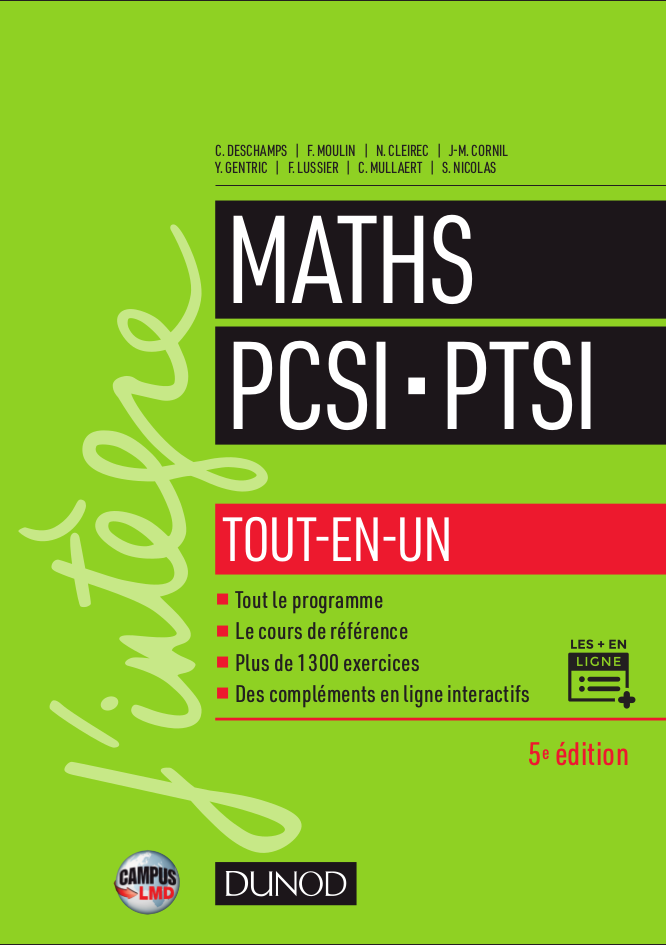Le discriminant de l'équation est :
\begin{align*}
\Delta &=(3+4\,i)^{2}-4\,\left( -1+5\,i\right)\\\\
&=-3+4\,i .
\end{align*}
La recherche des racines $u+i\,v$ de $\Delta $ mène à :
\[
u^{2}-v^{2}=-3, \quad u^{2}+v^{2}=5 \et 2\,u\,v=4.
\]
Explications supplémentaires si nécessaire
Le nombre complexe $u+i\,v$ vérifie :
\[
(u+i\,v)^2 = -3+4\,i
\]
si, et seulement si (par égalité des parties réelles et imaginaires) :
\[
(i)\quad u^{2} - v^{2} = -3 \et (ii) \quad 2\,u\,v = 4.
\]
En ajoutant l'égalité des modules, on a une nouvelle relation :
\[
(iii)\quad u^{2} + v^{2} = \sqrt{3^{2}+4^{2}} = 5.
\]
En faisant somme et différence de $(i)$ et $(ii)$, on obtient :
\[
u^{2} = 4 \et v^{2} = 1
\]
et donc :
\[
u = \pm 2 \et v=\pm 1.
\]
La relation $(ii)$ donne $u\,v >0$ et impose :
\[
(u=2 \text{ et } v=1) \ou (u=-2 \text{ et } v=-1).
\]
On peut donc prendre comme racine de $\Delta$ :
\[
u + i\, v = 2+i.
\]
Revoir éventuellement cette méthode dans la section précédente.
Par addition et soustraction, on en déduit $u^{2}=1$ et $v^{2}=4$, et donc :
\[
u=\pm 1 \et v=\pm 2.
\]
Le signe de $u\,v$ entraîne que les deux racines de $\Delta $ sont :
$$\pm \left( 1+2i\right) .$$
Par suite, les racines de l'équation donnée sont :
$$\frac{(3+4\,i)\pm \left( 1+2i\right) }{2}$$
c'est-à-dire :
\[
2+3\,i \et 1+i .
\]
